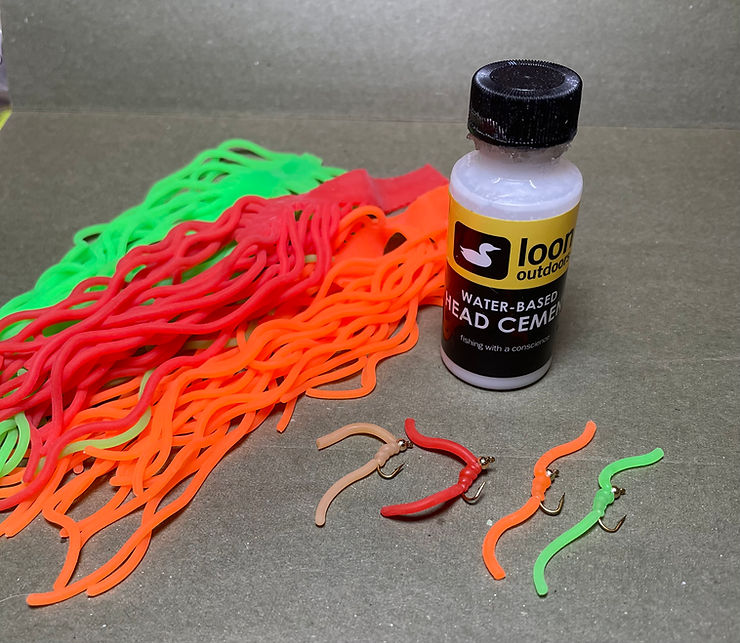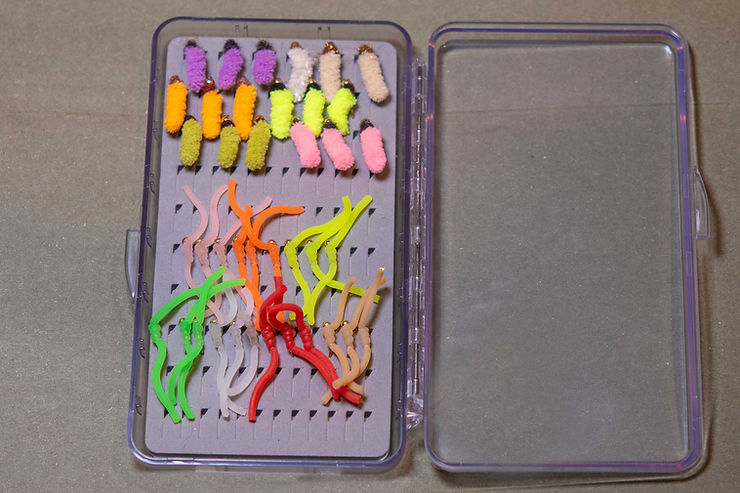Fishing and Tying Squirmy Wormy Flies

Squirmy Wormy flies catch fish. Period. They’re not fancy. They’re not sophisticated. Heck, I know a good handful of fly fishermen who won’t even admit to using them. Squirmy Wormy flies are like that nerdy kid on the playground who isn’t cool at all, but he’s always drafted first because he can kick the crap out of the ball.
Squirmy Wormy flies are a perfect example of how technology is used to improve iconic patterns. These flies are in the lineage of the San Juan Worm, which for decades was a perfectly acceptable pattern among fly fishers. However, with the development of silicone-based materials, particularly what is often referred to as “sili worm” material, the super chenille used to tie the San Juan Worm was replaced with silicone and the Squirmy Wormy was born…and immediately snubbed by some purists.
I’ve actually heard this argument on the stream before. Once, I eavesdropped on a conversation among three high school kids who had a pool of trout surrounded. One of the boys was catching fish at a much quicker rate and was asked what he was using. “Squirmy Worm,” he said.
“You should have just brought nightcrawlers!” scoffed one of his friends.
I’m not so judgmental when it comes to patterns. To me, it doesn’t matter what they look like – a fly is a fly – and my love is blind as long as I’m catching fish.
Fishing the Squirmy Wormy
Fishing with Squirmy Wormy flies isn’t complicated. Tie it on the same as you would any nymph, drop it under an indicator, or tight-line it through prime holding water. There’s really no wrong way to fish this fly.
I should note, though, that I seldom use a Squirmy Wormy as the top fly in a tandem rig. The floppy ends of the fly move a lot in the current, which is a good thing for triggering strikes, but it can also be bad because the fly tends to twist. If you drop another fly off the bend of the hook on a Squirmy Wormy, the tail of the fly will tangle with the dropper’s tippet. Sometimes the whole rig will even twist up, and if you get a strike on the dropper, where the line has twisted can become brittle and break off. For this reason, I prefer to use the Squirmy Wormy as the dropper on a tandem rig.
When the water is high or a little off-color, brighter colors such as fluorescent green, hot pink, fluorescent orange, and fluorescent yellow can be killer. If I had to choose only two colors from that list, I’d pick fluorescent green and hot pink, with fluorescent green being my top choice.
When the water is low and clear, choose more earthy tones such as natural, brown, red, purple, and even white. These colors work best for me later in the season, too, on streams that receive a lot of fishing pressure. In those instances, trout tend to shy away from the bright-colored patterns.
How to Tie Squirmy Wormy Flies
Tying Squirmy Wormy flies is about as easy as fly tying can get. I use a 1x-short curved scud hook, but you could use almost any shorter-shanked hook. Slide a bead of proportionate size onto the hook. For size 12 flies I use a 7/64 bead and for size 14 I use a 3/32 bead.
1. Attach your tying thread to the hook and completely cover the shank all the way back to just above the bend of the hook. I generally use 6/0 (140 denier) white thread, which has a thicker diameter than the 8/0 (70 denier) I use for most nymphs. The thicker diameter is less likely to cut through the silicone material.
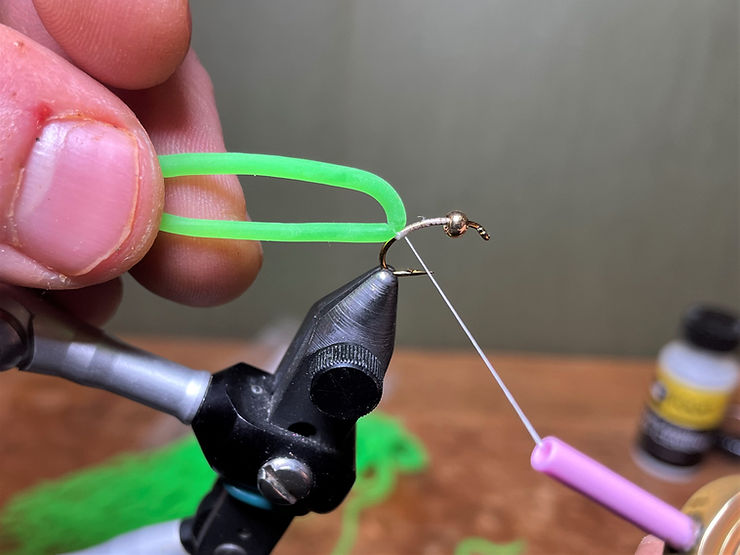
2. Attach a four-inch length of sili worm to the shank using two or three loose wraps and leaving approximately an inch and a half of material hanging out for the tail. Don’t tighten these wraps too much or you’ll cut through the material, which can be very fragile.
3. Once the material is attached to the hook, wrap once in front of it and then once behind it before advancing the thread up the shank to the bead. These front and back wraps prevent the material from spinning on the shank once you start to wrap it forward.
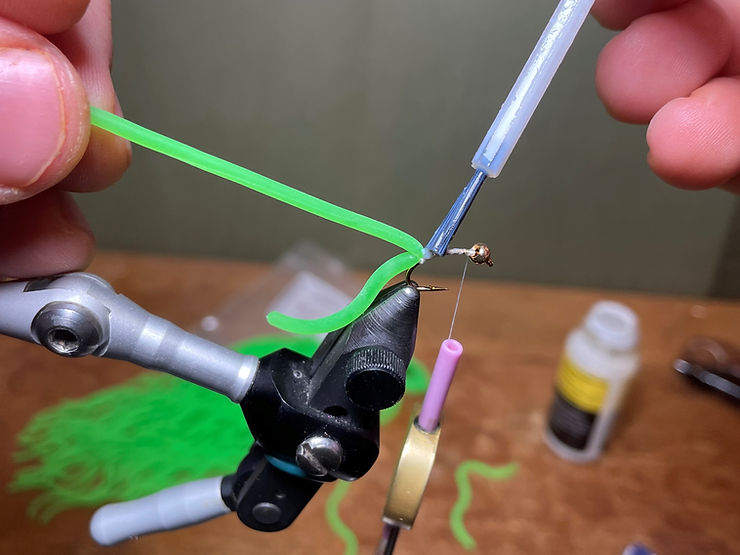
5. Wrap the material forward until it reaches the bead. These wraps should be snug but not tight. Don’t stretch the material too much as you wrap it.
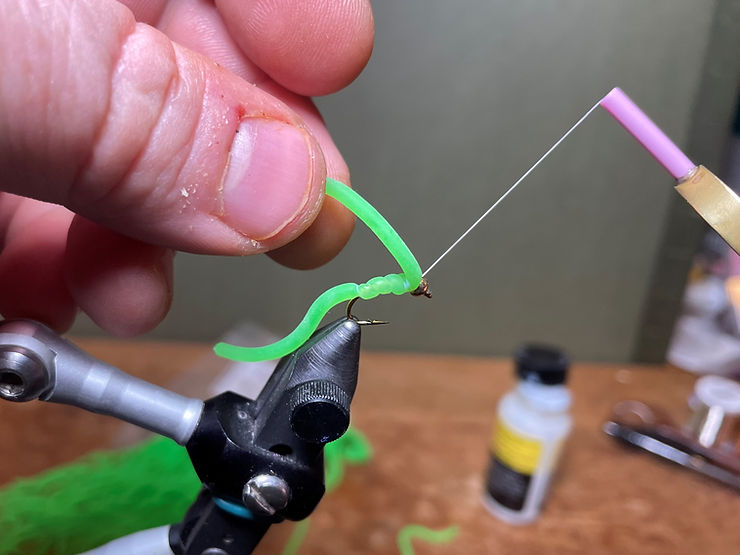
6. Secure the material with two or three loose wraps, and then go over those thread wraps in the same spot one more time but a little more snug. This will prevent the tightened thread from cutting the material.
7. Once the fly is tied off, another dab of water-based head cement on the thread wraps behind the bead will finish the fly. I then like to pull the front tag back and trim it so that it is approximately the same length at the tail. This will make for a more well balanced fly.
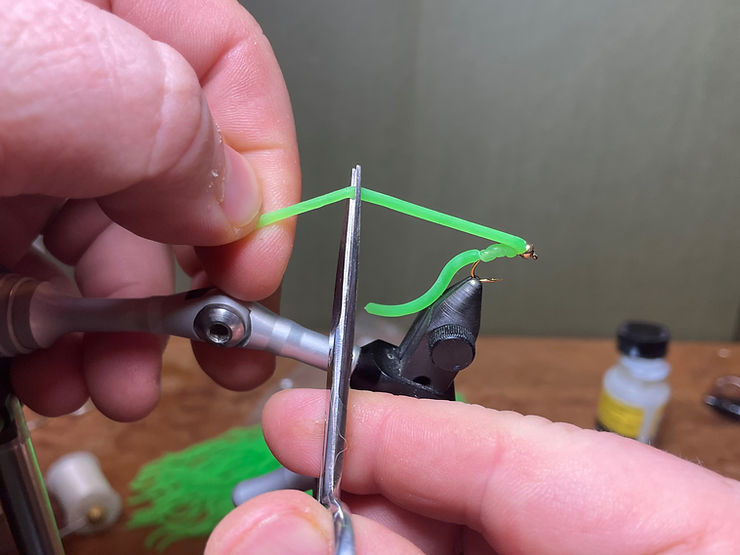
The finished product, ready to catch trout!
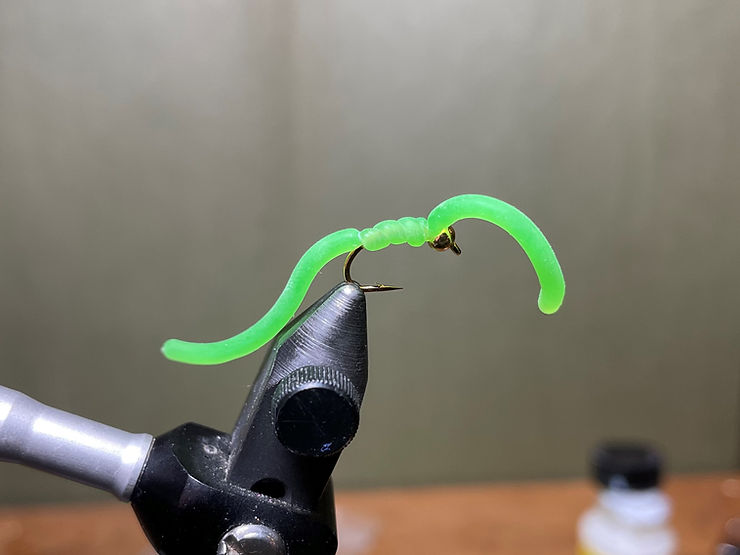
How to Make Squirmy Wormy Flies More Durable
As mentioned, sili worm material is fragile. However, there is a noticeable difference among brands as far which ones are most brittle, and sometimes it can even vary from one package to another within a brand.
Sprinkling corn starch over the sili worm material can also help make it more durable. It doesn’t take a lot, just a little bit to toughen the silicone and make it less brittle.
Caster’s Squirmito, “The Original Squirmy Worm Material”, is simply the best material to use for this pattern. It is durable and lifelike.
Storage is always a key factor in how long your Squirmy Wormy flies will last. They don’t hold up well in hot weather, so leaving them in the hot vehicle between fishing trips can ruin them. I’m speaking from experience here! Before I started tying these flies, I bought a bunch from a high-end fly shop and was shocked a week later when I went to use them and they were all split apart along the hook shank.
Another time, I tied up 30 purple Squirmy Wormy flies and had them in a plastic box that sat on the windowsill in my office. A few weeks later, I opened the box and again found that all of the silicone along the hook shank had split and the flies were ruined.
Store your Squirmy Wormy flies in a cool, dark place if you want them to last.
Watch this Video for More Tying Tips
Variations of the Squirmy Wormy Fly
Sili worm material can be used to create a number of variations of the Squirmy Wormy. Some patterns forego wrapping the material around the hook as described above. Rather, they attach a length of material to the hook with a couple inches extending from each end and then use dubbing to create a thorax along the hook shank.
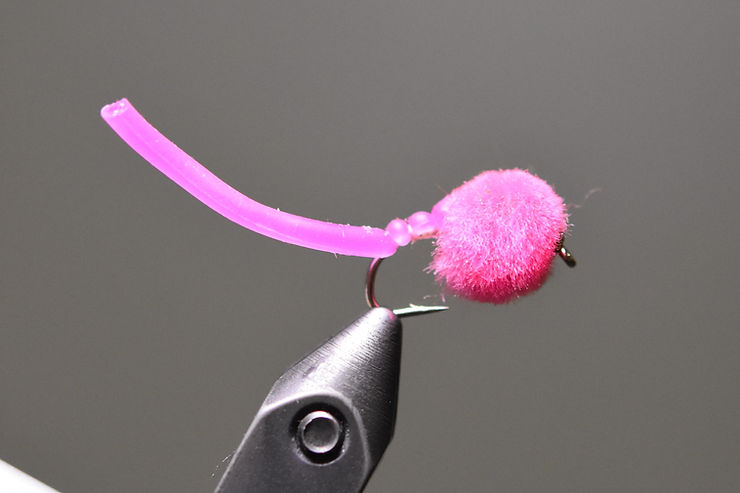
Another variation is the Squiggly Egg, or Squirminator, pictured here, which incorporates a tail of sili worm material and a head/body of an egg pattern.
If you’ve fished many Delayed Harvest Artificial Lures Only sections in the past few years, you’ve undoubtedly seen spin fishermen using Berkley PowerBait Mice Tail Worms. They’re deadly and definitely catch fish. The Squiggly Egg is basically the fly version of Mice Tail Worms, and they work quite well.
I always have a variety of colors of Squirmy Wormy flies in my box. They’re not a “magic bullet” by any means, and yes, there are times when they don’t work or other flies work better. But when they’re hot, they’re hot, and I’ve had some tremendous days using them.
Did You Find This Squirmy Wormy Guide Helpful?
Stay up to date with the Dark Skies Fly Fishing monthly newsletter for free and receive the latest fly fishing videos, news, tricks, tips, and techniques, stream reports, as well as updates on new flies added to the Online Store and exclusive discounts!
Sign Up NowDon't Forget About Our Assortments!
One of the most popular assortments in the online store is Mops and Squirmies — 39 flies (6 different colors of Mop flies and 7 different colors of Squirmies) for only $49.00, and it comes with a fly box. Check out this and other assortments in the online store.

